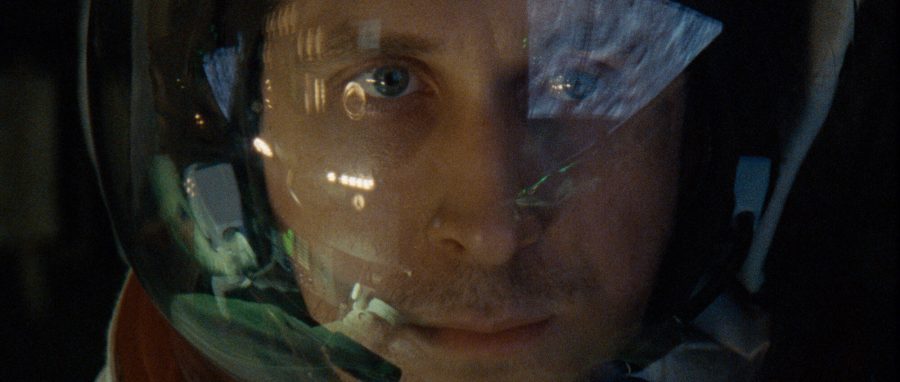July 20, 1969. The day that marked one small step for man and one giant leap for mankind. It was a moment that shattered any notions of what could and couldn’t be achieved by humanity and has been canonized as one of the most inspiring stories in history.
Reuniting director Damien Chazelle and star Ryan Gosling, “First Man” is the account of the first landing on the moon and the man behind the mission, Neil Armstrong. This is not a typical film about space or one that examines the competitiveness of the space race. Instead, it is the story of Armstrong, his family and his personal journey to reach the Moon.
“First Man” is unique in its abundance of silence. Chazelle utilizes the full capacity of the cinematography to explore the raw emotional states of the characters. Though many scenes lack dialogue, the power of body language make it clear just what is being communicated.
The film gives a glimpse into Armstrong’s backstory, which is filled with tragedy and familial absence, leading up to the momentous launch. His family was put through hell to support the United States in the space race and the audience is ridden with guilt that such a thing was allowed to happen.
Ryan Gosling delivers his best performance to date, proving that he has mastered the art of visual acting. As time passes, Gosling’s performance portrays Armstrong growing more and more distant from his family — carefully bringing to life the psychological torment that plagues him. Claire Foy who plays his wife, Janet Shearon, gives a heart wrenching performance alongside Gosling. The subtle scolds that Shearon throws Armstrong’s way or the nuanced shock from Armstrong when he hears about another fatal accident, were quiet yet powerful moments in the film.
“First Man” puts the audience in the pilot’s seat, quite literally. Shot by “La La Land” cinematographer Linus Sandgren, there are multiple genius point of view shots that — especially when viewed in IMAX — reproduce the feeling of flying or a rocket launch. The shaky camera and shots of Armstrong’s stoic face as he deals with unexpected technical difficulties are strong visual elements that convey the immense level of stress he was obviously feeling.
Despite knowing the outcome of this historic moment, Chazelle stimulates the tension to the point where it wasn’t certain if Armstrong was going to survive. “First Man” takes a tried story and shares it through a different lens. It tells the impossible accomplishment of landing on the moon through one man’s eyes, imparting the wisdom of the dedication and resilience essential to achieve greatness.
“First Man” opened in New York theaters on Friday, Oct. 12.
Email Daniel Devine at [email protected].
Email Daniel Devine at [email protected].























































































































































